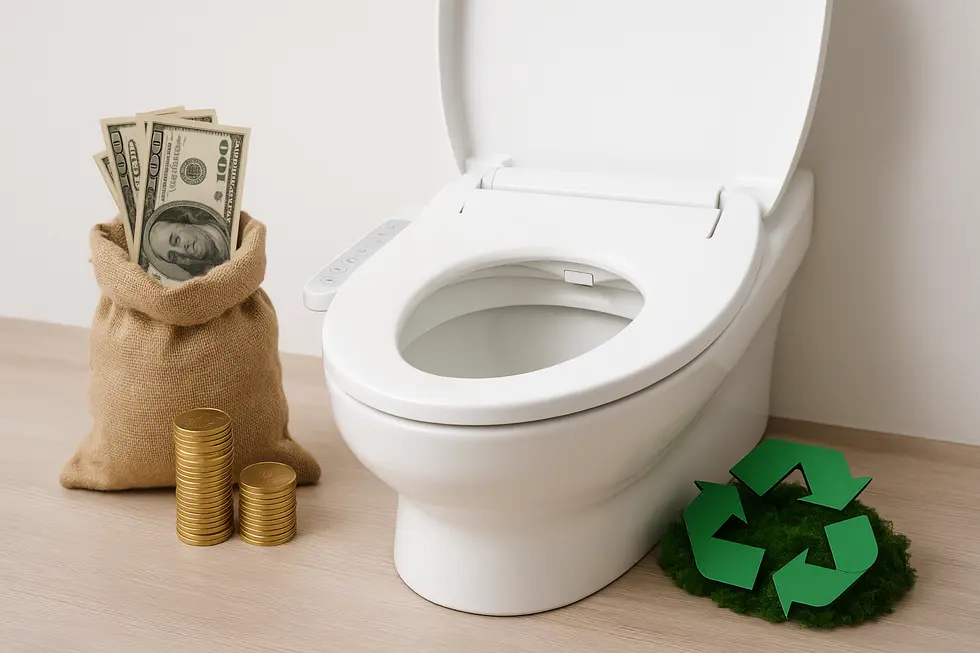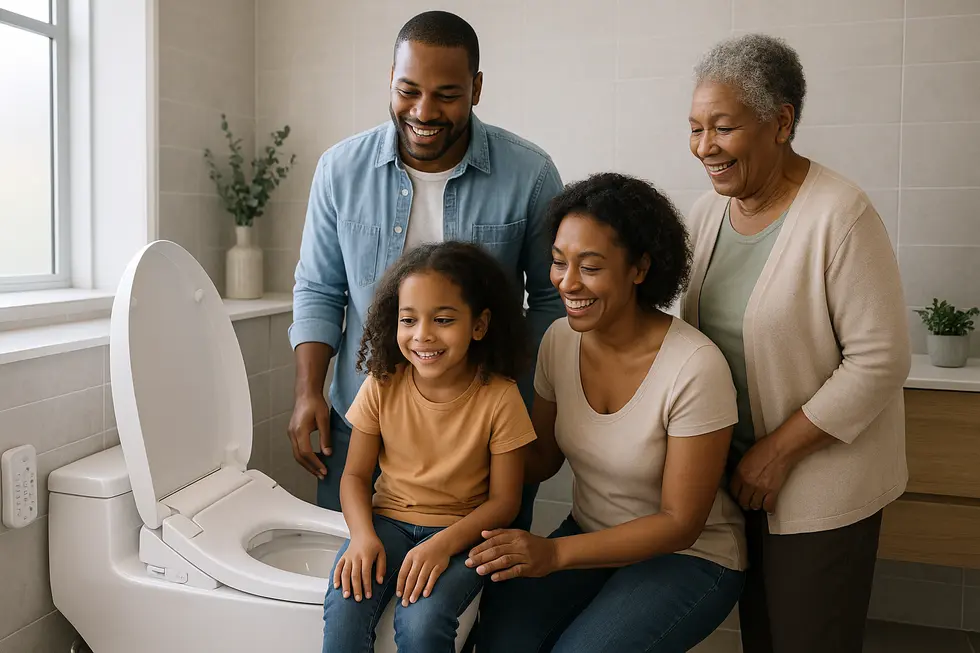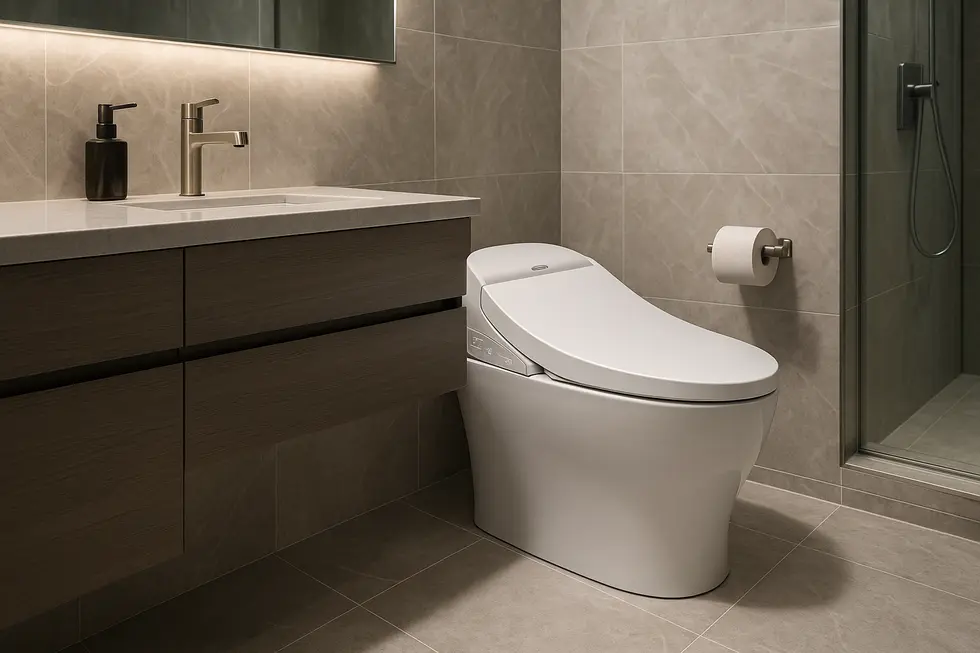Bidet Attachment, Bidet Seat
The Luxury of Clean: Revolutionizing Bathrooms with Smart Bidet Toilet Seats
Smart bidet toilet seats represent a significant advancement in bathroom technology, merging timeless bidet benefits with innovative features to enhance hygiene, comfort, and convenience for families. From customizable water pressure and temperature settings to environmentally friendly designs, these modern marvels cater to diverse needs and preferences, making them a worthy investment for households. This article explores the technological innovations underpinning these sophisticated fixtures, evaluates their economic and environmental impacts, and examines how they are being embraced by various cultural and societal norms.
From Sensor-Driven Seats to Self-Sterilising Nozzles: The Tech Inside Today’s Smart Bidets

Smart bidet toilet seats have crossed the threshold from convenient to truly intelligent, thanks to recent design breakthroughs. At the heart lies a network of micro-sensors that silently orchestrate every interaction. Pressure and proximity sensors wake the unit the moment a user approaches, easing the lid up in one fluid motion while pre-rinsing the stainless nozzle to guarantee sanitary readiness. When the seat detects occupancy it locks desired preferences—water temperature, spray style, nozzle angle—stored in an onboard memory chip so different members of the household experience consistency without scrolling through menus.
Comfort advances run deeper than the celebrated heated seat. Thermostatic elements now monitor ambient bathroom temperature and modulate seat warmth in real time, preventing the unwelcome “too hot” first contact of early models. The same closed-loop logic governs endless-flow water heaters that deliver a precise degree through the entire wash cycle, eliminating the cold spurts tank systems suffered.
Hygiene engineering has taken a quantum leap with UV-C diode arrays embedded around the retracting nozzle. After each session, a timed ultraviolet burst neutralizes microbes without chemicals or effort, an innovation inspired by hospital sterilization lamps. Some manufacturers pair this with electro-galvanic coatings that shed mineral residue, extending service life and preserving spray accuracy.
Sustainability, once an afterthought, now shapes every circuit board. Advanced aerators atomize the cleansing stream, achieving equal effectiveness while using up to 40 % less water. Integrated air dryers have followed suit, adopting PTC ceramic heaters that reach optimal temperature faster, cutting electricity draw and reducing reliance on paper. For households tracking eco metrics, many seats export usage data via Bluetooth to smartphone dashboards.
Design flexibility is equally forward-looking. Modular platforms let homeowners match slimline skirted bowls with the electronics package of their choice, ensuring that high tech no longer clashes with minimalist décor. This mix-and-match approach also simplifies future upgrades: swap a seat, not the whole toilet.
Together, these innovations transform the daily ritual into a personalised, hygienic and environmentally responsible experience—proof that even the most familiar fixtures can evolve through thoughtful engineering. For a broader look at smart bidet toilet benefits, see the linked guide. Additional model comparisons are available at this independent review hub: https://biobidet.com/blogs/news/these-are-the-top-rated-bidets-of-2025-according-to-us
Counting the Costs and Saving the Planet: The Economics and Ecology of Smart Bidet Toilet Seats

The sticker price of a smart bidet toilet seat can feel daunting. A quality electronic seat often commands several times the cost of a basic porcelain fixture. Yet that higher entry point is only the opening line in a longer financial story. Once installed, the device begins chipping away at routine household expenses—chief among them the mountains of toilet paper many families purchase each year. Studies tracking households after bidet adoption show paper use dropping by 70–90 percent, a reduction that can offset the purchase price within a few years while also sparing pipes from the clogs and service calls that paper overload invites.
Market analysts have noticed. Global revenue tied to bidet technology is projected to climb steadily through the next decade, buoyed by growing hygiene awareness and sustainability mandates in Europe and parts of Asia. As volumes rise, manufacturing efficiencies are expected to nudge prices downward, further enhancing return on investment for consumers and commercial operators alike. Hospitals and senior-care facilities, for example, increasingly turn to smart seats to streamline sanitation routines and lower infection-control costs.
The environmental ledger is even more compelling. A single roll of toilet paper requires roughly 37 gallons of water and a significant amount of virgin pulp. When a smart bidet displaces that roll, it saves trees, chemical processing energy, and transport emissions before a flush ever occurs. Although the seat uses water during cleansing, its targeted spray typically consumes less than an eighth of a gallon per wash—far below the hidden water footprint of producing the paper it replaces. Advanced models further economize with aerated sprays and adjustable pressure that deliver cleanliness without waste.
Reduced paper also eases the burden on municipal wastewater systems; fewer fibers mean smoother treatment and lower sludge volumes. Add features like automatic deodorization that minimise aerosol fresheners, and the ecological dividends widen.
For a deeper dive into health and lifestyle gains that accompany these fiscal and green advantages, see our guide to the comprehensive benefits of bidet toilets. Industry growth figures referenced above are detailed in the recent “Smart Toilet Market Report” available via Business Wire.
From Curiosity to Custom: Society’s Warming Embrace of the Smart Bidet Toilet Seat

The smart bidet toilet seat has travelled a surprising social arc. What began as a novelty from overseas hotel bathrooms is quietly becoming a symbol of thoughtful self-care in homes from Seattle to São Paulo. Sales curves mirror changing attitudes: once people experience the adjustable water cleanse, warm seat, and paper-free drying, the old roll feels suddenly primitive.
Public health conversations have accelerated this shift. Physicians and hygiene experts now underline how gentle water protects sensitive skin, lowers infection risk, and supports postpartum or post-surgery recovery. The pandemic years, with their frenzy over hand-washing and surface sanitation, nudged many to rethink every hygiene habit—including what happens after flushing.
Environmental awareness adds another persuasive layer. A single household can burn through dozens of toilet-paper rolls monthly; warm-air drying slashes that demand. Consumers who already carry reusable grocery bags or track their carbon footprints find the bidet an intuitive next step toward a lower-waste lifestyle.
Accessibility advocates are perhaps the loudest champions. People with arthritis, spinal injuries, or neurodegenerative conditions describe newfound independence when a remote-controlled nozzle replaces twisting, wiping, and repeated transfers. A compelling example is the detailed first-hand account of how electric bidets support people living with ALS, where dignity and caregiver relief take center stage.
Cultural exchange finishes the job. Travellers returning from Japan or Italy share glowing social-media reviews, complete with heated-seat selfies. Home-improvement influencers post installation videos that demystify plumbing and electrical steps in under ten minutes.
Obstacles remain, mostly psychological. Decades of satire painted bidets as extravagant or unmanly, while misconceptions about splash mess linger. Articles detailing the reasons many Western households previously avoided bidets help dispel myths, addressing worries about space, cost, or “weirdness.”
With hygiene science, ecological logic, accessibility gains, and cultural storytelling all stacked on one side of the scale, resistance keeps shrinking. Smart bidet toilet seats are no longer a fringe gadget; they are steadily rewriting what modern sanitation looks and—crucially—feels like.
Final thoughts
Smart bidet toilet seats are more than just a luxury; they are a practical upgrade for modern family bathrooms, offering unmatched hygiene and comfort. Their adoption signifies a shift towards more sustainable living, promising economic benefits and an eco-friendly lifestyle. As cultural acceptance grows, these advanced fixtures are set to become a staple in homes worldwide, paving the way for a cleaner, more efficient future in personal care.
Experience a new standard of clean with PEGABidet—designed for comfort, safety, and independence. Join thousands who trust us to make personal care simple and dignified. Contact us at contact@pegabidet.com.
About us
PEGABidet is a brand owned by L.A NEXTGEN LLC, based in California. We design intuitive, hygienic, and accessible bathroom solutions that prioritize safety, dignity, and independence. Our mission is to make personal care effortless and empowering for people at every stage of life.

